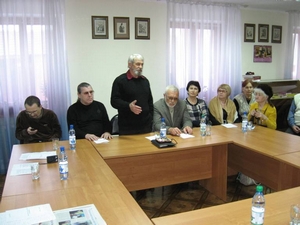The G. Tukai museum of Uralsk town decided to hold December 19, 2013, a conference “Ural Tatars Cossacks”. The conference will disclose in detail the history of the Tatar Cossacks on documentary evidence and eyewitness accounts.
The conference will be attended by Musayev Nagym Zulkarnaevich, his father was one of the best in Jighitovka (stunts in horse riding) served three terms in the 3rd Cossack regiment in Warsaw, was awarded by the “Lenin” order. Utepov Maksut Azhymuratovich, writer, ethnographer Yalfimov Aleksandr Petrovich and other historians and ethnographers will deliver the reports on history of Tatar Cossacks.
Those wishing to participate or get conference materials may contact the conference organizer by e-mail : marat_bgaut@mail.ru or by phone : +7 701 390 43 81 Bagautdinov Marat Rafailevich
For reference :
Tatars- Cossacks of Ural (Yaitsky) troop.
Uralsk was the main town of the Ural Cossack troop, here lived chieftains (atamans) elected by Cossacks, and (then after suppression of Pugachev’s rebellion), the appointed atamans, assigned by Petersburg authorities.
A considerable part of the Cossacks were Tatars or as they were called nugai-cossacks. They are on par with the Orthodox Cossacks carried military service.


Perhaps you know, that an outstanding Tatar historian-scientist D. Iskhakov wrote in 2000: “the real history of Tatars, of the people in every respect historical, is not written yet”.
However, recently were published books about the unwritten (hidden) real history of Tatars, written by independent Tatar Historian Galy Yenikeyev.
There are a lot of previously little-known historical facts, as well as 16 maps and illustrations in this book.
This book presents a new, or rather “well-forgotten old” information about the true history of the Tatars and other Turkic peoples.
It must be said, that there are many pro-Chinese and Persian falsifications of the “wild nomads” etc. in the official history.
Therefore, primarily we should know the truth about the meaning of the names “Mongol” and “Tatar” (“Tartar”) in the medieval Eurasia:
the name “Mongol” until the 17th-18th centuries meant belonging to a political community, and was not the ethnic name. While “the name “Tatar” was “the name of the native ethnos (nation) of Genghis Khan …” , “…Genghis Khan and his people did not speak the language, which we now call the “Mongolian”…” (Russian academic-orientalist V.P.Vasiliev, 19th century). This is also confirmed by many other little known facts.
So in fact Genghis Khan was a Tatar and a great leader of the all Turkic peoples. But with time many of his descendants and tribesmen became spiritually disabled and forgot him and his invaluable doctrine and covenants… Tatars of Genghis Khan -medieval Tatars – were one of the Turkic nations, whose descendants now live in many of the fraternal Turkic peoples of Eurasia – among the Tatars, Kazakhs, Bashkirs, Uighurs, and many others.
And few people know that the ethnos of medieval Tatars, which stopped the expansion of the Persians and the Chinese to the West of the World in Medieval centuries, is still alive. Despite the politicians of the tsars Romanovs and Bolsheviks dictators had divided and scattered this ethnos to different nations…
About everything above mentioned and a lot of the true history of the Tatars and other fraternal Turkic peoples, which was hidden from us, had been written, in detail and proved, in the book “Forgotten Heritage of Tatars” (by Galy Yenikeyev).
There are a lot of previously little-known historical facts, as well as 16 maps and illustrations in this book.
On the cover of this book you can see the true appearance of Genghis Khan. It is his lifetime portrait. Notes to the portrait from the book says: “…In the ancient Tatar historical source «About the clan of Genghis-Khan» the author gives the words of the mother of Genghis-Khan: «My son Genghis looks like this: he has a golden bushy beard, he wears a white fur coat and rides on a white horse» [34, p. 14]. As we can see, the portrait of an unknown medieval artist in many ways corresponds to the words of the mother of the Hero, which have come down to us in this ancient Tatar story. Therefore, this portrait, which corresponds to the information of the Tatar source and to data from other sources, we believe, the most reliably transmits the appearance of Genghis-Khan…”.
This e-book you can easily find in the Internet, on Smashwords company website: https://www.smashwords.com/profile/view/MIG17